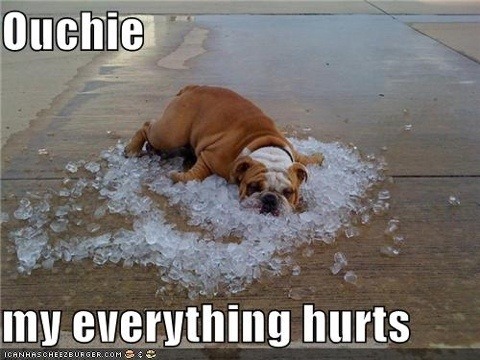Whether you are beginning runner or a seasoned marathoner, the feeling of muscle soreness can be felt. Most people attribute muscle soreness due to lactate acid build-up. However, lactate acid build-up and soreness are only a small part of the equation and understanding the different causes of soreness can go a long way to preventing injuries.
Our muscles primarily produce energy in one of two ways: Aerobic (in the presence of oxygen) and Anaerobic (without oxygen). The body is constantly balancing and shifting between the two, but for simplicity sake, we can say that aerobic metabolism is used for sustainable activities like walking or jogging and anaerobic activities such as sprinting or weight lifting. At no time is the body exclusively using one form of metabolism.
When muscles need ever increasing energy for sprinting, the body cannot supply enough oxygen to the muscles in order to produce energy aerobically and therefore shifts more to anaerobic metabolism. A by-product of anaerobic metabolism is lactic acid. As more and more lactic acid builds, a burn can be felt in the working muscles until they can no longer contract and the activity must be stopped. The burning sensation is from lactic acid and this causes muscle failure. This is why we have limitations to our sprinting or how many times we can lift a weight. When the body begins absorbing the lactic acid, the burn goes away, and the activity can begin again. However, it takes several hours for all the lactic acid to fully be absorbed thus limiting contractile strength for hours. The soreness is temporary and does not cause muscle soreness following the activity.
Muscle soreness that is felt 24-72 hours after an activity is called, Delayed Onset Muscle Soreness (DOMS) and is caused by micro-tears to muscle fibers, not lactic acid. This often occurs with new activities or an increase in activity. The prevailing theory is that the body rebuilds these micro-tears and the muscle becomes stronger. The soreness should be mild and disappear in one to three days. However, one does not have to feel sore following a training session in order to get stronger. In fact, keeping DOMS to a minimum is the safer training strategy. If one increases activity too quickly or too intensely, larger tears in the muscles can occur which can often lead to injury.
Interested in learning more about the lactic acid burn?
By the way...I personally use and endorse Extreme Endurance for managing recovery and buffering lactic acid. I get no kick back...but maybe I should!
Run for your lives,
Bree

No comments:
Post a Comment